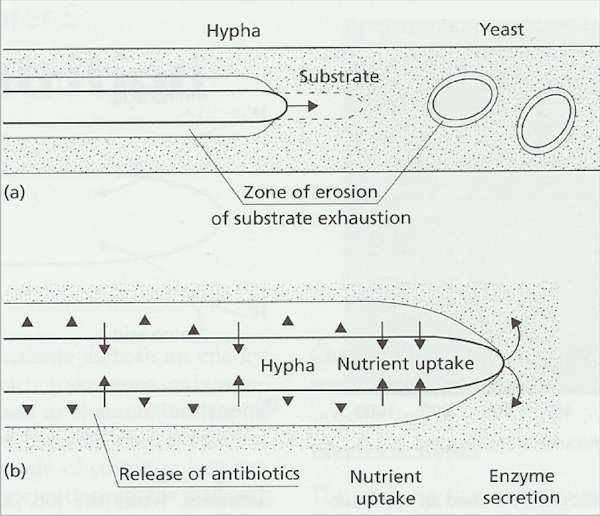Fungal nutrition
Fungi are heterotrophic for carbon. They need organic compounds to satisfy energy and carbon requirements. There are three main modes of nutrition: saprotrophy, where fungi utilize dead plant, animal or microbial remains; parasitism, where fungi utilize living tissues of plants and animals to the detriment of the host; and symbiosis, where fungi live with living tissues to the benefit of the host.

Carbohydrates must enter hyphae in a soluble form because the rigid cell wall prevents endocytosis. The Soluble sugars cross the fungal wall through diffusion followed through active uptake across the fungal membrane. This type of nutrition is seen in the symbiotic and some par- asitic fungi. For the saprophytic fungi most carbon in the environment is not in a soluble form but is present as a complex polymer like cellulose, chitin or lignin. These polymers have to be broken down enzymically before they can be utilized. Fungi release degradative enzymes into their environments. Different classes of enzyme can be produced, including the cellulases chitinases, proteases and multi-component lignin-degrading enzymes depending on the kind of substrate the fungus is growing on. Regulation of these enzymes is by substrate induction and end-product inhibition.